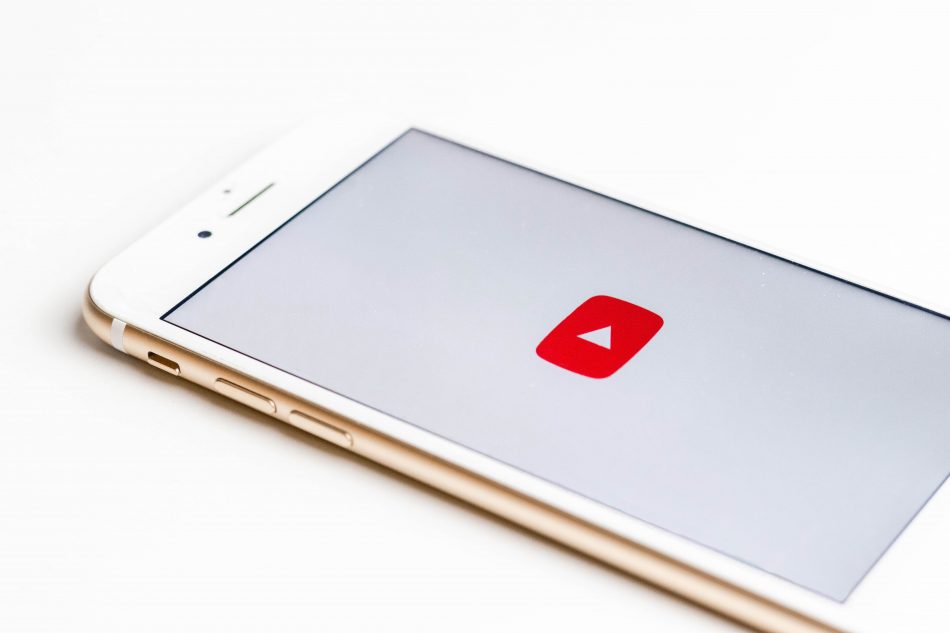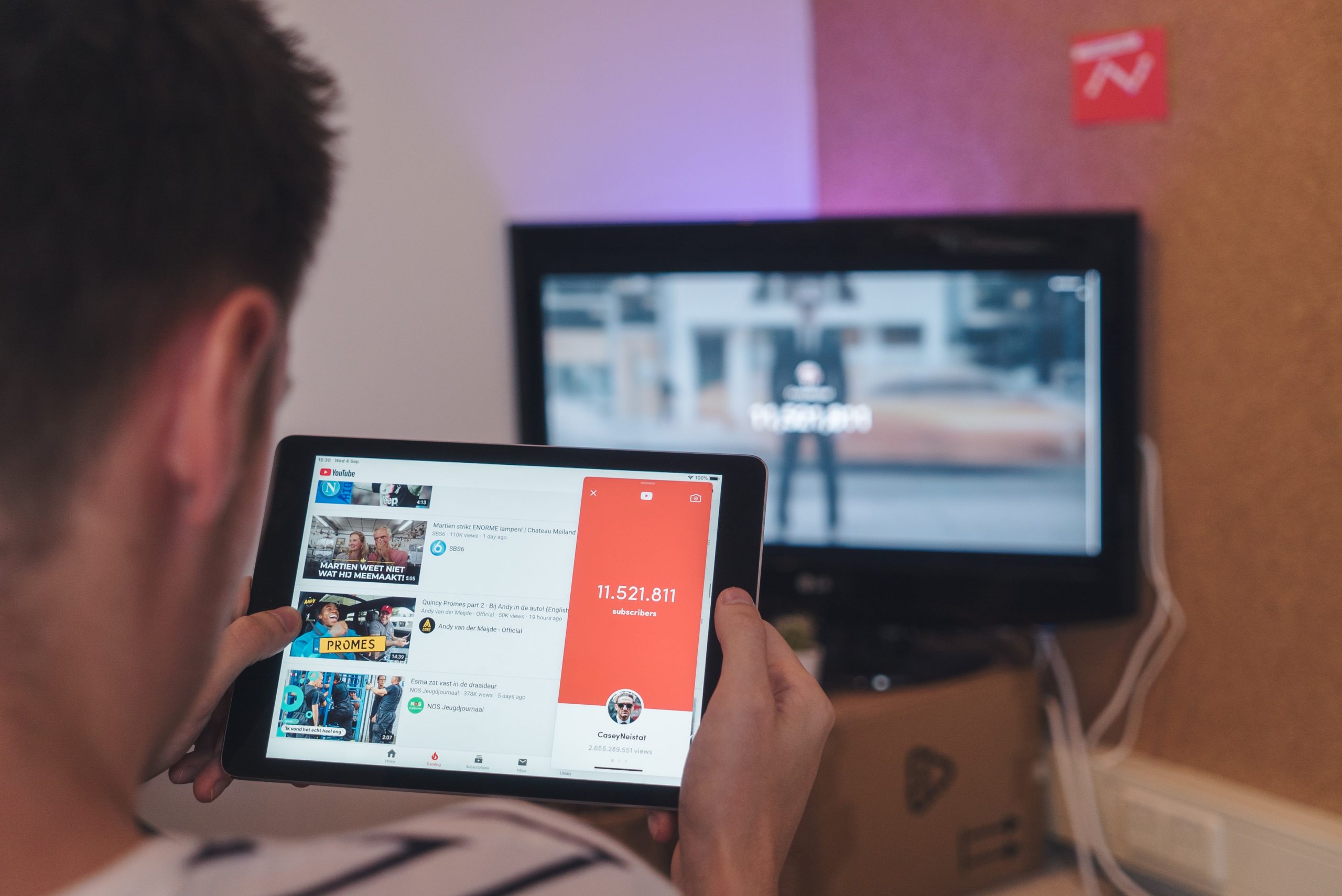New to YouTube advertising? Simply Ads is here to guide you through every step of the process, to ensure your video marketing campaign achieves the best results for your business.
Our guide will cover the following topics:
- Benefits of advertising on YouTube
- Cost of YouTube advertising
- Types of YouTube ads
- How to set up and launch a campaign
- How to measure your success
BENEFITS OF ADVERTISING ON YOUTUBE
YouTube advertising is the swiss army knife of online marketing, offering effective solutions at all stages of the customer life cycle; from reach and acquisition to conversion and retention.
- Outreach
YouTube is the largest video sharing platform in the world and the second largest search engine after Google. Two billion people* use the platform every single month. The average session time per user is around 40 minutes, which eclipses almost any other website for engagement, meaning the audience is likely to be very valuable.
*according to Statista in 2019
- Audience Targeting
One of the coolest things about YouTube advertising is the amount of control you have over who sees your ad. YouTube give you the opportunity to select attributes that make up your target audience, showing your adverts only to that specially selected target audience. And remember, if they skip the ad, you don’t pay!
We talk more about effective audience targeting in this blog post.
- Low Cost
YouTube ads give marketers the option of setting out a weekly budget, you can even determine the maximum amount you want to pay per view via Google Adwords, and remember if the viewer skips the ad, you don’t pay!
Read How Much Does a YouTube advert cost.
- Measurability
No matter what the goals of your campaign are, YouTube advertising provides extensive data so that everything can be accurately tracked and measured, allowing you to easily calculate the exact return on investment from your ad.
HOW MUCH DOES A YOUTUBE AD COST?
One of the reasons why marketers love YouTube advertising is that there’s a solution to suit every budget. All you need is a video, a YouTube account and a few pennies to get started.
Video ads can be produced on a surprisingly small budget; the fewer elements involved in the video, the cheaper it will be to produce. If you’re on a budget, we would recommend using animation to keep your production costs down. Live action, video overlays, graphics, actors and voice-overs will all increase the cost of producing your video.
We go into detailed specifics of cost in our post How much does a YouTube advert cost?
TYPES OF YOUTUBE ADVERTISING
There are 6 different ways to advertise on YouTube, you can choose one method or a combination, depending on what your end goal is.
The types of YouTube video ad are:
- TrueView Ads
- Bumper Ads
- Un-Skippable Ads Then there are three further types of advertising on YouTube to consider adding to the mix too:
- Sponsored card ads
- Overlay ads
- Display ads
- TrueView Ads
TrueView ads are the standard type of video ad on YouTube. Advertisers only pay for TrueView ads when viewers watch or interact with their ad, and videos can be easily customized to share a wide variety of content.
With TrueView Ads, you only pay when a user watches the ad for at least 30 seconds (or until the end of the video if it’s less than 30 seconds), or if the viewer takes an action, such as clicking on a call-to-action. If the viewer skips before this point, then the advertiser don’t pay a thing.
YouTube’s current specifications requires skippable TrueView ads to be between 12 seconds and 6 minutes in length, and that non-skippable TrueView ads be 15-20 seconds in length.
TrueView Ads can be further divided into in-stream ads and discovery ads; the former ad plays before a viewer’s chosen video while the latter appear in the search results.
Pros of TrueView Ads
- They’re versatile
- They reach a wide audience
- They’re cost effective. When you run a Trueview in-stream advert on YouTube, you show a 30-second video advert to a YouTube user and they have the option to skip it after 5 seconds. If they skip it before your 30 second ad has finished playing, you don’t pay a penny! And if they do watch it, it might cost you around $0.05.
- Great for storytelling and trying out engaging formats such as how-to-videos and product demos.
Cons of TrueView Ads
- Potentially the most time-consuming and expensive type of YouTube ad to produce, as the content tends to be longer.
- Bumper Ads
Similar to non-skippable ads in that bumper ads also cannot be skipped and advertisers pay per thousand views but bumper ads are shorter; YouTube specifications require Bumper ads to be no longer than six seconds.
Pros of Bumper Ads
- Can work well in support of your larger YouTube campaign
- Cheapest option
Cons of Bumper Ads
- Not the best format if the audience has not been initiated with your brand
- Not the best format if you have a lot to say to your audience
- Non-skippable Ads
Unsurprisingly, non-skippable ads are the least popular amongst YouTube users. They are limited to 20 seconds. Advertisers are required to pay per 1,000 views. These tend to be favoured by larger companies looking to achieve mass exposure.
Pro of Un-skippable Ads
- High watch rate guaranteed
Cons of Un-skippable Ads
– Most expensive advertising option
- Sponsored card ads
A sponsored card ad consists of a small ‘i’ for ‘information’ pop-up on your YouTube video that can be clicked for more information. If you want to take product placement to the next level, sponsored card ads can help you get there; use these to direct the viewer towards products that are being used on screen.
- Overlay ads
A banner underneath the video. This is cheap and doesn’t even require a video ad (yay!) or design as there’s a template already in place for you to use. Overlay ads can be effective when thoughtfully created with the content it’s being placed over in mind.
- Display ads
Display ads appear in the right-hand sidebar above the suggested videos list and can come in different sizes. Display ads are a good way to get your brand in front of a really engaged/appropriate audience, without a video, and they give more creative freedom than an Overlay ad.
HOW TO SET UP AND LAUNCH A CAMPAIGN
- Set the goals of your video ad campaign.
- Create the content. For inspiration take a look at our guide to creating a YouTube advert, and check out Google’s YouTube ad leader board, which showcases the top YouTube ads users choose to watch each month.
- Set up your YouTube account
- Set up a Google AdWords account if you don’t already have one. You will need to add payment details to the AdWords account in order for the ads to run.
- Link your YouTube account to your AdWords account so that you can measure your campaign results.
- Set up your YouTube advertising campaign within the Google Ads platform. You will need to name your campaign and select a campaign objective such as generating leads or generating website visits. You will also need to set a daily budget.
- Set your audience targets.
- Link the video ad to the campaign that you’ve just set up in Google Ads.
- At this point you can also add a call to action that will appear over a skippable ad, in order to drive more click throughs from the ad to your website.
- Copy and paste the URL of your YouTube ad into the relevant field at this point in order to select the ad that you want to show your audience.
- Set the ad to go live for the Google representatives to review. The verification process for YouTube ads can take up to 48 hours and sometimes more during peak periods, such as the lead up to Black Friday.
HOW TO MEASURE SUCCESS
Every campaign should have at least one main goal, as defined within your overall marketing strategy. These could relate to increased sales, leads, web traffic or brand awareness.
It is then very important for all stakeholders to identify and agree on the measurement metrics up front. The three main ways to measure the success of your YouTube campaign is to examine:
- website behaviour
- search engine data
- YouTube engagement.
Example metrics of success for Brand Awareness Campaign
- An increase in brand search volume (Google Trends, Google Search Console)
- An increase in direct traffic (Google Analytics)
- An increase in conversion rates (Google Analytics)
- A decrease in bounce rate (Google Analytics)
- An increase in average visitor value (Google Analytics)
- A decrease in the cost per acquisition of other Advertising (Adwords, Other platforms)
- An increase in organic search traffic landing on the homepage (Google Analytics)
Different goals will require different metrics, but the above should serve as a good example of metrics that anyone who runs a YouTube campaign should have access to.
YouTube also has a tracking pixel that can accurately report whenever anyone sees a YouTube ad and then later, converts. This is an excellent method for tracking conversions like leads and sales from YouTube campaigns.
Simply Ads can help you to create a video, manage your advertising budget, manage the ad targeting and help you to measure the success of the ad campaign against your goals.
Give us a call today to find out how we can help you achieve your YouTube marketing campaign goals.


